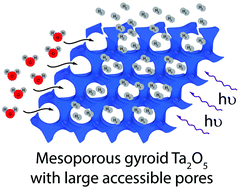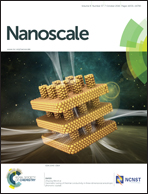Ordered gyroidal tantalum oxide photocatalysts: eliminating diffusion limitations and tuning surface barriers†
Abstract
In this work we synthesized well-ordered, Ta2O5 films with a 3D-interconnected gyroid mesopore architecture with large pore sizes beyond 30 nm and extended crystalline domains through self-assembly of tailor-made triblock-terpolymers. This has effectively eliminated diffusion limitations inherent to previously reported mesoporous photocatalysts and resulted in superior hydrogen evolution with apparent quantum yields of up to 4.6% in the absence of any cocatalyst. We further show that the injection barrier at the solid–liquid interface constitutes a key criterion for photocatalytic performance and can be modified by the choice of the carbon template. This work highlights pore and surface engineering as a promising tool towards high-performance mesoporous catalysts and electrodes for various energy-related applications.


 Please wait while we load your content...
Please wait while we load your content...